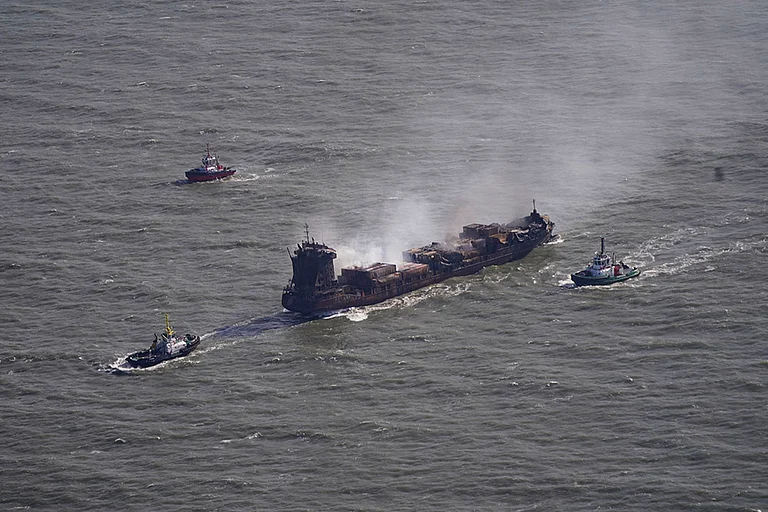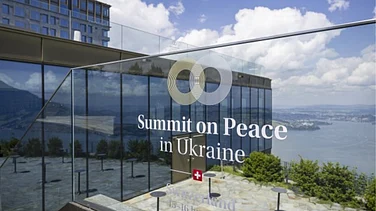Iran's potential closure of the Strait of Hormuz is a threat that has reemerged with force amid rising tensions, intensifying concerns across global markets and diplomatic circles.
The Strait of Hormuz is a narrow but strategically vital waterway that connects the Persian Gulf to the Gulf of Oman and ultimately to the Arabian Sea. It sits between Iran to the north and Oman and the United Arab Emirates to the south. In its narrowest segment, the strait spans only about 21 nautical miles across, but despite its size, it plays an outsized role in the global economy. Every day, a significant portion of the world’s oil supply—estimated at around 20% of all seaborne crude—passes through this route. The waterway is governed by the United Nations Convention on the Law of the Sea under the principle of “transit passage,” allowing ships of all nations to pass through it, even in territorial waters claimed by the coastal states.
Collision Highlights Fragility of Maritime Navigation
On June 17, 2025, the fragility of this crucial route was underscored when two oil tankers collided near the strait. The vessels involved were the Front Eagle, a Liberian-flagged VLCC transporting Iraqi crude oil bound for Zhoushan, China, and the Adalynn, a Suezmax tanker that was travelling empty toward the Suez Canal in Egypt. The incident took place approximately 24 nautical miles off the coast of Khor Fakkan, a port city in the United Arab Emirates, located just east of the Strait of Hormuz. Following the collision, both vessels caught fire. The UAE Coast Guard managed to evacuate all 24 crew members from the Adalynn, while the crew of the Front Eagle was reported safe after onboard firefighting measures extinguished the blaze.
Investigations into the crash reveal that it was navigational in nature. Preliminary tracking data shows that the Front Eagle turned starboard and impacted the port quarter of the Adalynn. Ship owner Frontline has stated that there was no indication of foul play or external aggression. According to Reuters and British maritime security firm Ambrey also confirmed that the crash did not appear to be security-related. However, what complicates the situation is the concurrent occurrence of widespread GPS interference in the region. Reports from UK Maritime Trade Operations, The Guardian, and the Combined Maritime Forces indicate that thousands of vessels in the vicinity, particularly near Iran’s port of Bandar Abbas, have been experiencing navigation system disruptions over recent days.
A visual analysis by the Financial Times and other sources, such as the Hindu Business Line, has shown erratic movements and false location signals from vessels transiting the Strait, suggestive of GPS spoofing or jamming. Though Frontline has denied that interference caused the collision, analysts and naval experts are increasingly warning that such electronic warfare tactics, even when not directly aggressive, can greatly raise the risk of maritime accidents in such a densely trafficked and strategically sensitive area.
Iranian Threats to Close the Strait Add to Volatility
The tanker collision comes amid a sharp uptick in tensions between Iran and Israel, marked by reciprocal missile and drone strikes over the past week. In the wake of these escalations, senior Iranian political and military figures have reiterated their longstanding threat to close the Strait of Hormuz. On June 14, 2025, as reported by Al Jazeera, Esmail Kosari, a member of Iran’s parliament and a senior figure in the Islamic Revolutionary Guard Corps (IRGC), publicly stated that the option of shutting down the strait “is under serious consideration.” These comments echo previous warnings issued by Tehran during times of heightened international pressure or conflict.
The importance of the Strait of Hormuz to global oil markets cannot be overstated. At its peak, around 21 million barrels of oil per day transited the strait, accounting for roughly a fifth of global consumption. Even though countries like Saudi Arabia and the United Arab Emirates have built pipelines to bypass the strait, these alternatives cover only a fraction of the total export capacity. The vast majority of Gulf oil exports—including those from Iraq, Kuwait, Qatar, and Iran itself—continue to depend on safe passage through this channel.
Economic Ripples from Political Uncertainty
Any attempt by Iran to obstruct the Strait of Hormuz would have immediate and severe implications for global energy markets. While no physical blockade has occurred so far, oil futures have already responded to the rhetoric. Prices surged as much as 2.7% following a CNBC report quoting President Donald Trump’s statement warning of a potential escalation, although they later dipped as signs of restraint emerged from both sides. Insurance premiums for vessels transiting the area have also spiked, with some war risk surcharges doubling amid uncertainty. Major shipping companies, including Frontline, have reportedly begun suspending new contracts in the region as a precaution.
The Hindu BusinessLine reports that the Indian oil refiners have also taken notice. India, which heavily relies on oil shipments via Hormuz, has begun exploring alternative supply routes and sources, such as increased imports from West Africa, to mitigate potential disruptions. The Times of India reported that Indian officials are in active consultation with suppliers and insurers to develop contingency plans, given that over 60% of the country’s crude comes through the Gulf region.
Meanwhile, Iran’s own economic interests are not insulated from such a move. The Islamic Republic exports most of its oil by sea, and a closure of the Strait of Hormuz would essentially block its own supply lines as well. Experts from financial institutions like JP Morgan, quoted in Bloomberg, have noted that any action Tehran takes to halt traffic in the Strait would likely harm its own economy as much as it does others. Iran’s use of the threat is often seen as more strategic than operational, serving as a tool of geopolitical leverage during periods of confrontation.
Over the past decade, Iran has demonstrated its ability to harass shipping in the region without resorting to a full blockade. Small naval skirmishes, drone flyovers, and the occasional seizure of vessels have all been part of Tehran’s asymmetric warfare strategy. The IRGC has a significant naval presence near the strait and employs tactics aimed at challenging larger navies while maintaining plausible deniability. This includes the deployment of fast-attack craft, naval mines, and electronic warfare tools, such as those that may have played a role in the most recent tanker collision.
The June 17 incident, therefore, underscores a growing concern about maritime safety in one of the world’s most critical energy corridors. Even when an accident is not caused by hostile action, the volatile context in which it occurs raises alarm. Electronic disruptions, heightened military alertness, and aggressive rhetoric from state actors all create an environment in which a simple misstep could rapidly escalate. For international shipping companies, insurers, and governments dependent on Gulf energy, the message is clear: the Strait of Hormuz remains a flashpoint, and recent events are a stark reminder of just how quickly tensions in this narrow corridor can reverberate across the world.


























